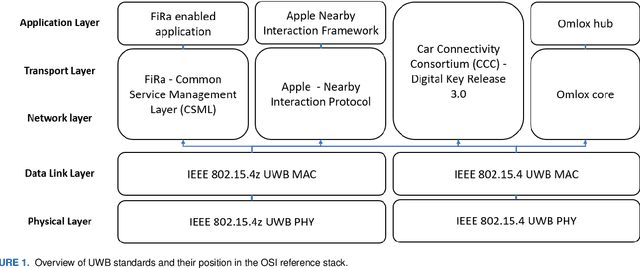Dieter Coppens
Removing the need for ground truth UWB data collection: self-supervised ranging error correction using deep reinforcement learning
Mar 28, 2024Abstract:Indoor positioning using UWB technology has gained interest due to its centimeter-level accuracy potential. However, multipath effects and non-line-of-sight conditions cause ranging errors between anchors and tags. Existing approaches for mitigating these ranging errors rely on collecting large labeled datasets, making them impractical for real-world deployments. This paper proposes a novel self-supervised deep reinforcement learning approach that does not require labeled ground truth data. A reinforcement learning agent uses the channel impulse response as a state and predicts corrections to minimize the error between corrected and estimated ranges. The agent learns, self-supervised, by iteratively improving corrections that are generated by combining the predictability of trajectories with filtering and smoothening. Experiments on real-world UWB measurements demonstrate comparable performance to state-of-the-art supervised methods, overcoming data dependency and lack of generalizability limitations. This makes self-supervised deep reinforcement learning a promising solution for practical and scalable UWB-ranging error correction.
An Overview of Ultra-WideBand (UWB) Standards(IEEE 802.15.4, FiRa, Apple): Interoperability Aspects and Future Research Directions
Feb 04, 2022



Abstract:The increasing popularity of ultra-wideband (UWB) technology for location-based services such as access control and real-time indoor track\&tracing, as well as UWB support in new consumer devices such as smartphones, has resulted in the availability of multiple new UWB radio chips. However, due to this increase in UWB device availability, the question of which (industry) standards and configuration factors impact UWB interoperability and compatibility becomes increasingly important. In this paper, the fundamentals of UWB compatibility are investigated by first giving an overview of different UWB radio chips on the market. After that, an overview of UWB standards and standardisation entities is given. Next, this overview is used to discuss the focus of these different standards and to identify the differences between them. We describe compatibility issues and associated interoperability aspects related to PHY, MAC, and upper layers. For the PHY layer, compatibility is possible for all UWB chips if the correct settings are configured. For the MAC layer, the implementation of the multiple access scheme as well as the localization technique is mostly proprietary. For the device discovery, several standards are currently being drafted. Finally, future challenges related to UWB interoperability are discussed.
 Add to Chrome
Add to Chrome Add to Firefox
Add to Firefox Add to Edge
Add to Edge